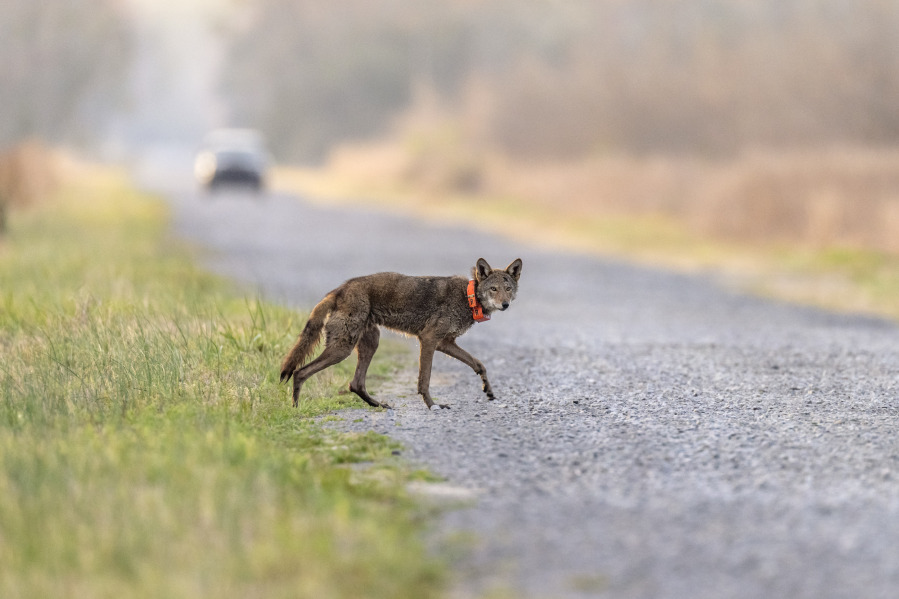WAKE FOREST, N.C. — The endangered red wolf can survive in the wild, but only with “significant additional management intervention,” according to a long-awaited population viability analysis released Friday.
The U.S. Fish and Wildlife Service also released an updated recovery plan Friday for “Canis rufus” — the only wolf species unique to the United States. It calls for spending nearly $328 million over the next 50 years to get the red wolf off the endangered species list.
“This final revised recovery plan will help the conservation and survival of the Red Wolf, ensuring these endangered canids endure in the wild for future generations,” Interior Department Assistant Secretary for Fish and Wildlife and Parks Shannon Estenoz said in a news release.
But the announcement comes with a lot of caveats. The viability analysis says it will take drastic reductions in gunshot and vehicle deaths, stepped-up efforts to prevent wolf-coyote mixing, and creative methods to increase reproduction in the wild and captive wolf populations.
As of August, Fish and Wildlife said the known and collared wild population was 13, with a total estimated wild population of 23 to 22 — all on and around two federal reserves on the North Carolina coast.
“Despite active current management of this very small population, declines in abundance will likely continue in the face of persistent threats including high anthropogenic (human-caused) mortality and continued hybridization with coyotes,” the study said.
If releases from the captive breeding program were to cease, extinction of the North Carolina population will likely take place in two to three decades.
The red wolf once roamed from central Texas to southern Iowa and as far east as Long Island, N.Y. But generations of persecution, encroachment and habitat loss reduced them to just a remnant along the Texas-Louisiana border.
Starting in 1973, the year Congress passed the Endangered Species Act, the last wolves were pulled from the wild and placed in a captive-breeding program. In 1980, they were declared extinct in the wild.
But in 1987, the agency placed four breeding pairs in the 158,000-acre Alligator River National Wildlife Refuge. Another “nonessential experimental population” was later planted in the Great Smoky Mountains National Park, but was declared a failure in 1998.
The Alligator River population thrived, growing to as many as an estimated 130 wolves by 2012. But gunshot deaths and a 2014 decision to cease releases from the captive population, among other factors, caused the numbers to plummet to as low as seven wild wolves in recent years.
According to the recovery plan, the first update in around three decades, additional wild populations “are necessary for redundancy and, therefore, Red Wolf viability.” But that will need to include federal, state, municipal and private land.
“We have not yet identified locations for establishing new Red Wolf populations,” the report said.
In August, Fish and Wildlife settled a federal lawsuit by a coalition of conservation groups, promising regular releases of the wolves from the captive population — which currently stands at around 270 — over the next eight years.



